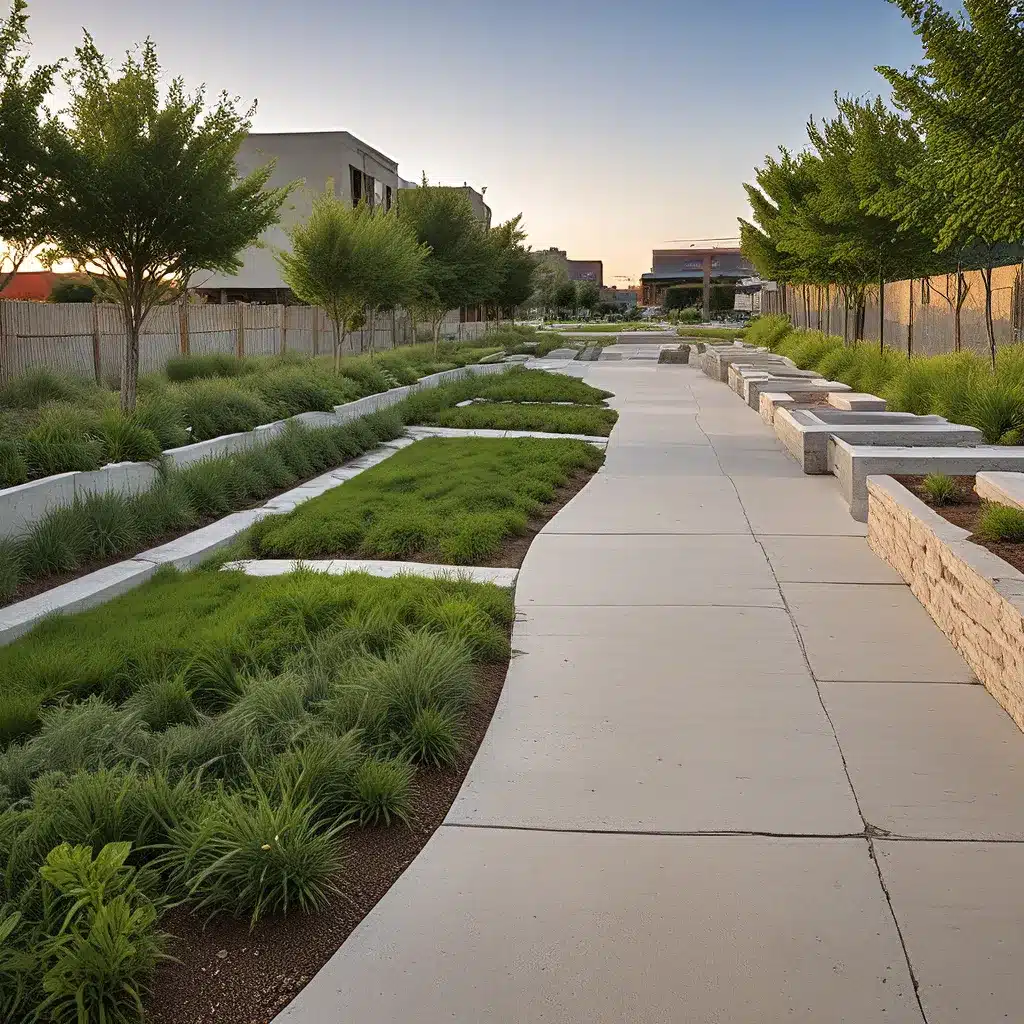
As the demand for concrete construction continues to grow in Kansas City, there is an increasing focus on adopting sustainable and eco-friendly practices in the industry. Green roofs, cool roofs, and other innovative solutions are emerging as viable options to mitigate the environmental impact of concrete while delivering a range of benefits to homeowners, businesses, and the community as a whole.
Harnessing the Power of Green Roofs
One of the most promising eco-friendly approaches in the concrete landscape of Kansas City is the implementation of green roofs. A green roof, or rooftop garden, is a vegetative layer grown on a rooftop, providing a range of environmental and social benefits.
According to the EPA, green roofs have been proven to help reduce the heat island effect, a phenomenon where urban areas experience higher temperatures compared to surrounding rural areas. By providing shade, removing heat from the air, and reducing the surface temperature of the roof, green roofs can moderate the heat island effect, particularly during the day. In fact, green roof temperatures can be 30-40°F lower than those of conventional roofs, and can reduce city-wide ambient temperatures by up to 5°F.
In addition to their cooling benefits, green roofs also reduce building energy use by up to 7% compared to conventional roofs, leading to annual savings of $0.23 per square foot of the roof’s surface. These temperature reduction and energy efficiency benefits are a key driver behind the growing popularity of green roofs in the United States, with the North American green roof industry estimated to have grown by more than 10% in 2016 over the previous year.
Exploring the Advantages of Green Roofs
The advantages of green roofs extend far beyond their ability to mitigate the heat island effect and reduce energy costs. According to the EPA, green roofs offer a range of co-benefits, including:
- Reduced and filtered stormwater runoff: Green roofs can help manage stormwater more effectively, reducing the burden on city infrastructure and improving water quality.
- Absorption of pollutants and carbon dioxide: The vegetation on green roofs can help improve air quality by absorbing pollutants and carbon dioxide.
- Provision of natural habitat: Green roofs can create new green spaces, providing habitat for various plant and animal species.
- Recreational green space: In the case of intensive green roofs, they can serve as recreational green spaces for the public.
Quantifying the Benefits in Kansas City
To better understand the impact of green roofs in Kansas City, the EPA has published a case study titled “Estimating the Environmental Effects of Green Roofs”. The study found that the over 700,000 ft² total coverage of green roofs installed in Kansas City between 1999-2020 would result in the following benefits in 2020:
- Avoided emissions of 384 pounds of nitrogen oxide, 734 pounds of sulfur dioxide, and 269 tons of carbon dioxide
- Monetized health benefits of $35,500-$80,500
These impressive figures demonstrate the significant environmental and health advantages that green roofs can provide to the Kansas City community.
Weighing the Costs and Benefits
While the initial costs of installing green roofs can be higher than those of conventional roofing materials, building owners can help offset these differences through reduced energy costs, stormwater management fee savings, and the potentially longer lifespan of green roofs compared to conventional roofs.
According to the EPA, a simple extensive green roof without public access could cost as little as one-tenth to one-third of the cost to construct an intensive green roof intended for public access. Typical maintenance for green roofs includes fertilization, irrigation, weed control, and replanting when necessary, with intensive green roofs potentially requiring more extensive maintenance to maintain their aesthetic and public access uses.
A lifecycle cost analysis conducted by researchers at Lawrence Berkeley National Laboratory found that while green roofs are more expensive than cool or conventional roofs, they provide significantly higher relative benefits per square foot over a 50-year lifecycle, including energy cost savings, avoided emissions, and reduced stormwater fees. Compared to conventional roofs, the benefits of extensive green roofs are 14% more per square foot, while cool roofs provide benefits of 2% more per square foot relative to conventional roofs.
Choosing the Right Concrete Services in Kansas City
As homeowners and business owners in Kansas City explore the benefits of green roofs and other eco-friendly concrete solutions, it’s crucial to partner with a reputable and experienced concrete contractor. Concrete Contractor Kansas City is a trusted provider of high-quality concrete services, offering a range of residential and commercial solutions, including specialized expertise in green roof installation and maintenance.
By working with a professional concrete contractor, you can ensure that your project is completed to the highest standards, adhering to local building codes and best practices. Whether you’re building a new structure or renovating an existing one, a skilled concrete contractor can help you navigate the process, recommend appropriate eco-friendly options, and deliver a long-lasting, sustainable solution that enhances the aesthetic and environmental impact of your property.
Embracing the Future of Sustainable Concrete
As Kansas City continues to grow and evolve, the need for sustainable and eco-friendly concrete solutions is becoming increasingly critical. Green roofs, cool roofs, and other innovative approaches offer a promising path forward, providing a range of benefits that go beyond traditional concrete construction.
By embracing these eco-friendly practices, homeowners, businesses, and the broader community can work together to green the concrete landscape of Kansas City, creating a more livable, sustainable, and resilient urban environment for generations to come.

